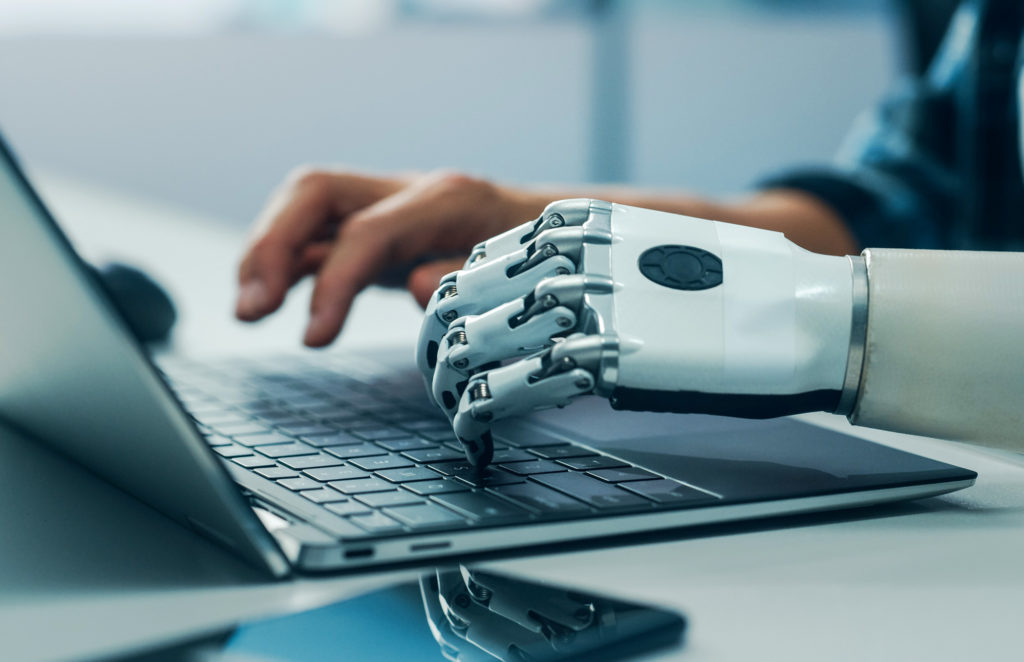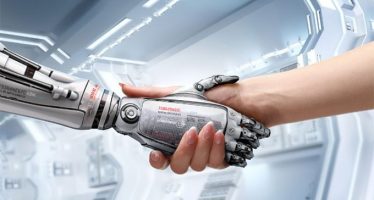The Exponential Growth of AI Computing Power: Trends and Predictions for the Next Five Years
The field of artificial intelligence (AI) has experienced remarkable growth in recent years, driven by advancements in algorithms, the availability of massive datasets, and, crucially, the exponential increase in computing power. This article explores the projected growth of compute power available for AI over the next five years, examining the factors contributing to this trend, the emerging technologies shaping it, and the potential implications for society.

Historical Trends in AI Computing Power
Understanding the future of AI computing requires a look at its past. Over the past decade, the amount of compute used to train significant AI systems has increased by a factor of 350 million (GovAI Blog). This rapid expansion in compute has not only led to incremental improvements but also served as a primary catalyst for groundbreaking AI developments. Key enablers have included hardware improvements, such as the use of Graphics Processing Units (GPUs) designed for AI workloads, and massive investments in AI infrastructure (Ultralytics Blog). GPU performance, for example, has increased roughly 7,000 times since 2003. Historically, the compute used to train AI systems has doubled approximately every six months.
Projected Growth of AI Computing Power
Extrapolating from historical trends, experts anticipate a continued surge in AI computing power over the next five years, driven by:
- Advancements in AI Hardware: Specialized AI chips—GPUs, TPUs (Tensor Processing Units), and NPUs (Neural Processing Units)—are accelerating AI workloads. These chips are optimized for parallel processing, high throughput, and low power consumption (Straits Research).
- Growth of Cloud Computing Infrastructure: Cloud computing provides scalable, cost-effective access to vast computational resources. The cloud AI market is expected to grow significantly, further boosting the expansion of AI computing power.
- Emergence of New Technologies: Quantum computing and photonic chips offer potential breakthroughs that could revolutionize AI processing, tackling complex problems currently beyond classical computers.
- Increasing Demand for Computing Power: Scaling deep learning models improves accuracy and performance, driving exponentially growing demand for computing resources (AI Now Institute).
- Need for Larger AI Clusters: As demand for AI grows, larger AI clusters emerge, comprising hundreds of thousands of accelerators. This scale introduces challenges in orchestration and hardware stability (Institute for Progress).
Estimates vary on the doubling rates of required AI computing power. While one research paper suggests it doubles every month, others indicate a doubling every 100 days (Reddit) or every six months.
AI Hardware Market Size and Growth
The expansion of AI computing power closely aligns with the growth of the AI hardware market. This market encompasses processors, memory, and network devices tailored for AI applications. Several forecasts highlight robust market growth:
| Source | 2023 Market Size (USD Billion) | Forecast & Year (USD Billion) | CAGR (%) |
|---|---|---|---|
| GlobeNewswire | 53.71 | 473.53 (2033) | 24.5 |
| Verified Market Research | 54.10 | 474.10 (2030) | 38.73 |
| Market.us | 53.9 | 833.4 (2033) | 31.5 |
| Precedence Research | 53.71 | 473.53 (2033) | 23.9 (US Market) |
| Credence Research | 56.175 | 179.145 (2032) | 15.6 |
| Skyquest Technology | 23.5 | 84.9 (2031) | 15.5 |
These projections showcase substantial investment in AI hardware to meet escalating demands.
Industry Reports and Forecasts
Industry reports provide insights into the AI infrastructure market—which includes hardware, software, and services—and confirm robust growth expectations:
| Source | 2023 Market Size (USD Billion) | Forecast & Year (USD Billion) | CAGR (%) |
|---|---|---|---|
| Mordor Intelligence | 68.46 | 171.21 (2029) | 20.12 |
| SNS Insider | 36.78 | 322.89 (2032) | 27.3 |
| Straits Research | 55.82 | 304.23 (2032) | 20.72 |
| MarketsandMarkets | 135.81 | 394.46 (2030) | 19.4 |
| Grand View Research | 45.49 | 223.45 (2030) | 30.4 |
The United States is expected to lead in AI investments, accounting for over half of global AI spending (IDC).
Key Trends in AI Hardware Development
- Specialized AI Chips: GPUs, TPUs, and NPUs offer significant performance improvements for AI workloads over general-purpose CPUs (Data Monsters, Deloitte Insights).
- Edge AI Devices: The push toward edge computing brings AI processing closer to data sources, enabling real-time operations in scenarios like autonomous vehicles and IoT devices.
- AI-Embedded PCs: Leading hardware makers are introducing AI-embedded PCs that run AI models locally, reducing cloud dependence and improving privacy (MarketsandMarkets).
- Neural Processing Units (NPUs): NPUs handle smaller AI workloads efficiently and with lower power, enabling on-premises AI applications for sensitive data (Deloitte Insights).
- Increased Data and Storage Needs: As AI generates massive data, storage requirements surge, driving the development of storage accelerators and solutions (Tooliqa).
Photonic Chips: A New Frontier in AI Hardware
Photonic chips use light instead of electricity for information processing, offering advantages like:
- Faster Processing: Light-based data transmission enables higher-speed computations (PhotonDelta).
- Energy Efficiency: Less heat generation translates into lower energy consumption and improved efficiency.
- Enhanced Bandwidth: Photonic chips handle large data volumes simultaneously.
Potential applications include:
- Deep Neural Networks: Photonic processors can accelerate deep learning computations (The Quantum Insider).
- Optical Neural Networks: Photons can perform AI tasks with dramatically reduced energy costs (Singularity Hub).
- Programmable On-Chip Processing: Lithography-free photonic chips can be programmed for specific AI tasks (Penn Today).
IBM’s Breakthrough in Optics for AI
IBM’s research on co-packaged optics (CPO) integrates optical components directly with electronic chips for high-speed optical connectivity in data centers. This innovation promises:
- Faster AI model training times
- Lower costs for scaling generative AI
- Greater energy efficiency in data centers
As data centers grow to support massive AI workloads, such breakthroughs could revolutionize the speed, cost, and sustainability of AI processing.
Potential Impact of Quantum Computing
Quantum computing uses qubits that can represent multiple states simultaneously, enabling computations beyond classical capabilities (CapTechU Blog). Potential AI applications include:
- Drug Discovery: Quantum simulations can accelerate identification of effective drug candidates (Lerner Research Institute).
- Materials Science: Simulating atomic-level interactions to discover new materials.
- Financial Modeling: Quantum computing can handle complex market data, improving modeling accuracy and efficiency.
AI and quantum computing are mutually supportive. AI can aid in advancing quantum simulation and optimization, while quantum computing can expand AI’s computational frontiers.
Energy Consumption and Sustainability
The explosive growth in AI compute raises sustainability concerns. Complex AI models demand substantial energy. A single ChatGPT query consumes nearly ten times the electricity of a typical Google search, and AI applications may drive a 160% increase in data center power demand by 2030 (Goldman Sachs). Addressing energy efficiency through more efficient hardware and sustainable data center operations is critical.
Implications for AI Systems Capabilities in Five Years
The exponential growth in AI computing power will likely enable:
- More Sophisticated AI Models: Larger, more complex models improve accuracy and performance in various domains (Institute for Progress).
- Enhanced Cognitive Abilities: AI systems may approach human-level intelligence in certain tasks, improving natural language understanding and reasoning (IBM).
- Breakthroughs in AI Applications: From healthcare to finance and materials science, AI’s enhanced compute power enables more accurate diagnoses, personalized treatments, and innovative product development (Lerner Research Institute).
- Increased Automation: Greater AI capabilities drive automation across industries, boosting productivity but raising concerns about job displacement and the need for workforce adaptation (Pew Research).
- Ethical and Societal Challenges: More powerful AI raises ethical questions—bias, privacy, security, and misuse. Responsible AI development is essential (Built In).
Expert Opinions and Predictions
Most experts agree that compute power remains fundamental to AI progress (Pew Research). While they foresee breakthroughs enabled by abundant computing resources, some warn of risks like job displacement and ethical challenges as AI systems grow more powerful (Built In).
Synthesis and Conclusion
The exponential growth in AI computing power—driven by advancements in specialized AI hardware, cloud infrastructure, quantum computing, and photonic chips—is set to redefine the capabilities of AI systems in the next five years. This expansion will fuel breakthroughs across healthcare, finance, materials science, and beyond, potentially revolutionizing entire industries.
Yet, this progress brings challenges. Sustainability concerns, with soaring energy demands, and ethical issues, including fairness, privacy, and equitable access, must be addressed. Society’s response to these challenges will shape how the benefits of AI are distributed and whether the technology is harnessed responsibly.
Achieving a balance requires investment in education, training, and policies that promote responsible AI development. With thoughtful governance, the growth in AI computing power can be steered toward advancing human well-being, enhancing economic opportunity, and fostering a more inclusive and sustainable future.
You may have an interest in also reading…
Ian Fletcher, IBM: Fourth Industrial Revolution – Positioning for Change
We are living in one of the most transformational times in human history, creating a paradigm shift that will bring
Lord Waverley on Digital Transactions: Well Worth the Paper They Aren’t Written On
Trading across borders is a notoriously complex process, highly dependent on paper documents — despite decades-long efforts to digitalise. A
Book Review: Numerology, Mystery, Romance… and the Development of an App
7 Unicorn Drive: From Start-up To A Billion Dollar Sale In 7 Years by Dani Polajnar This book is a



















































































